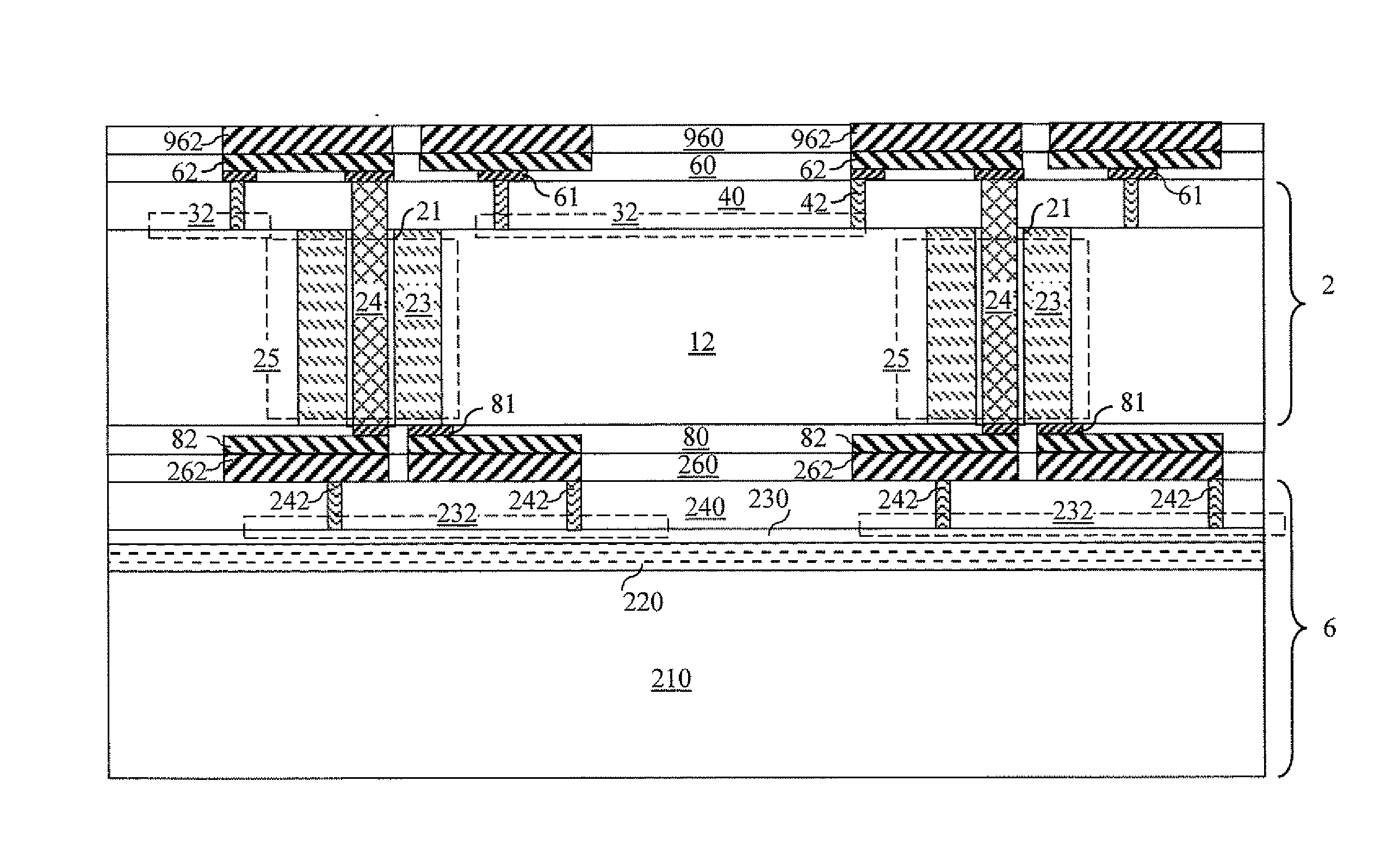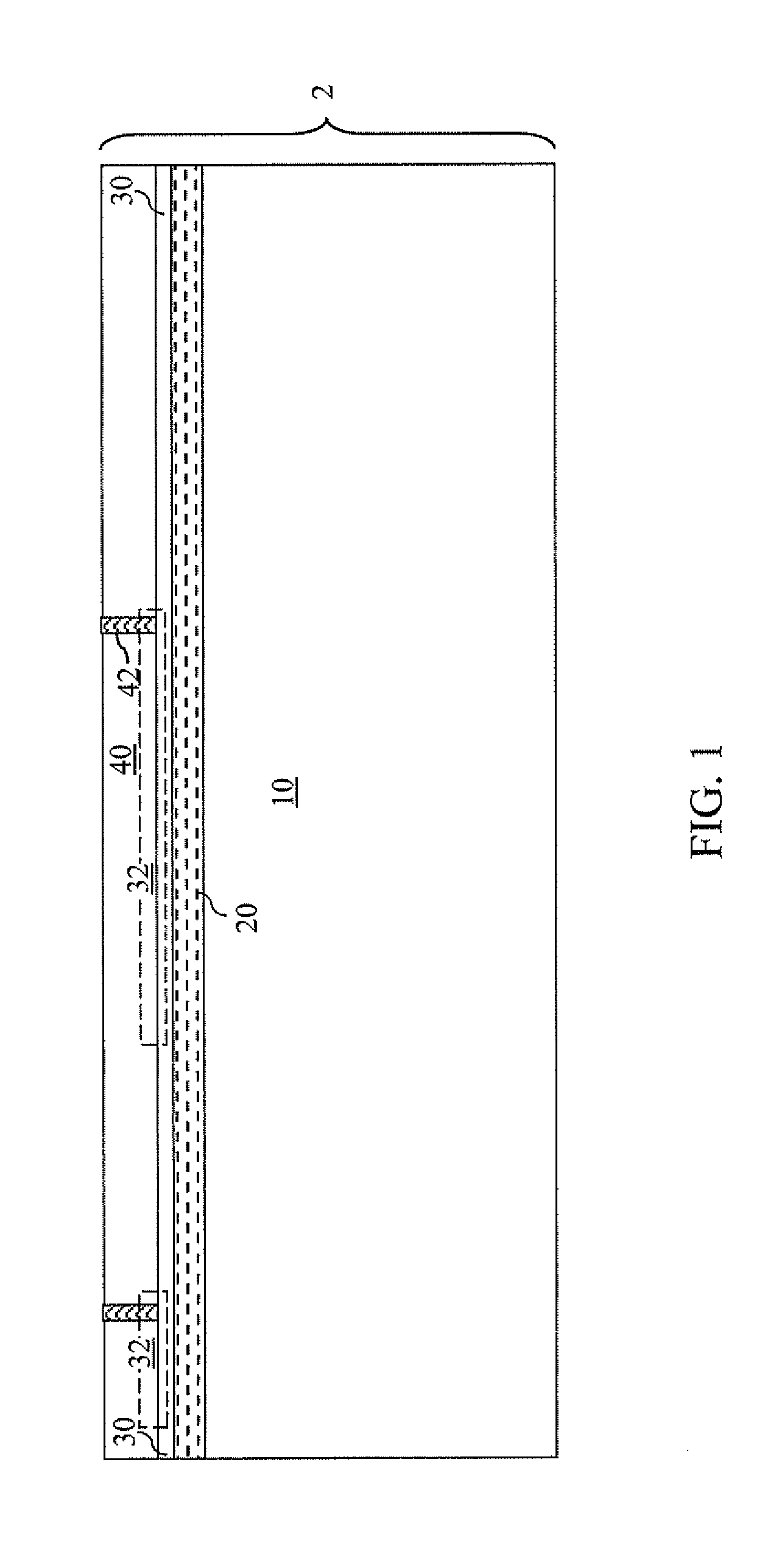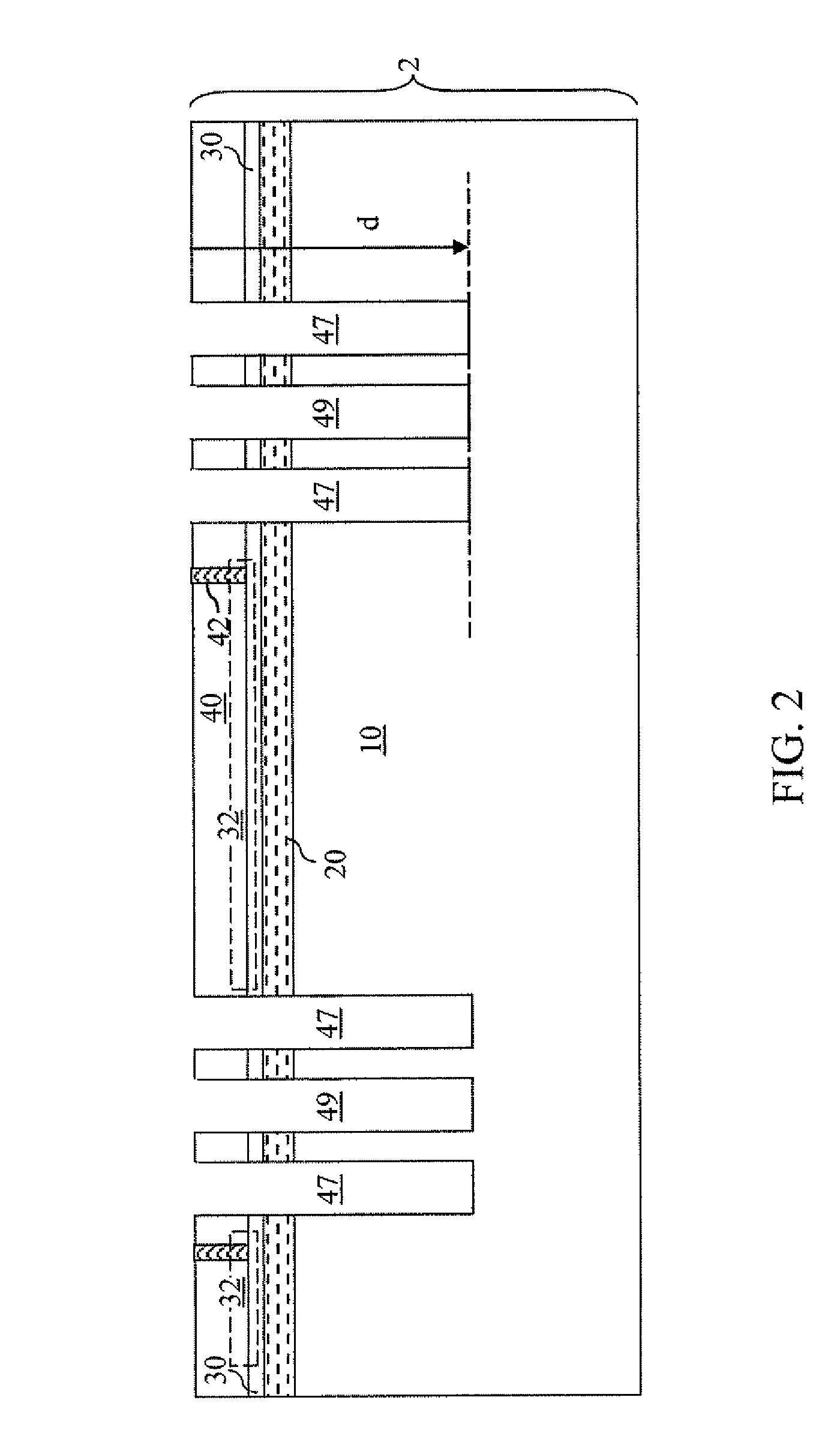Signal shielding through-substrate vias for 3D integration
a technology of through-substrate vias and signals, applied in the direction of semiconductor devices, semiconductor/solid-state device details, electrical apparatus, etc., can solve the problems of limiting the maximum frequency of signals that can be transmitted through the tsv, false transient signals, and imposing limitations on the benefits of 3d integration
- Summary
- Abstract
- Description
- Claims
- Application Information
AI Technical Summary
Problems solved by technology
Method used
Image
Examples
first embodiment
[0023]Referring to FIG. 1, a first exemplary semiconductor structure according to the present invention includes a first substrate 2. The first substrate 2 can include a semiconductor-on-insulator (SOI) substrate, a bulk semiconductor substrate, or a hybrid substrate including at least one SOI portion and at least one bulk portion. If the first substrate 2 includes an SOI substrate, the SOI substrate can contain, from bottom to top, a first handle substrate 10, a first buried insulator layer 20, and a first top semiconductor layer 30. Typical materials employed for the first handle substrate 10 include a semiconductor material or silicate glass.
[0024]The first handle substrate 10 can include a semiconductor material, a dielectric material, a conductive material, or a combination thereof. Typically, the first handle substrate 20 includes a semiconductor material. The thickness of the handle substrate 10 can be from 100 microns to 1,000 microns, although lesser and greater thicknesses...
second embodiment
[0059]Referring to FIG. 10, a second exemplary semiconductor structure according to the present invention is derived from the first exemplary structure of FIG. 5 or any variation of the first exemplary structure at a processing step corresponding to the step of FIG. 5 by bonding a temporary substrate 9 to the first substrate 2. The temporary substrate 9 can be bonded to the first substrate 2 by methods known in the art. The first substrate 2 and the temporary substrate 9 collectively constitute a bonded substrate. The front side of the first substrate 2 is bonded to the temporary substrate 9. For example, terminal front side metal pads 962 that are embedded in a terminal front side dielectric layer 960 are formed on the front side of the temporary substrate 9. Subsequently, the terminal front side metal pads 962 in the temporary substrate 9 are bonded to the first front side metal pads 62 in the first substrate 2.
[0060]The temporary substrate 9 includes a temporary handle substrate ...
fourth embodiment
[0080]Referring to FIG. 24, a fourth exemplary semiconductor structure according to the present invention is derived from the third exemplary structure of FIG. 18 by bonding a temporary substrate 9 to the first substrate 2. The temporary substrate 9 can be bonded to the first substrate 2 by methods known in the art. The first substrate 2 and the temporary substrate 9 collectively constitute a bonded substrate. The front side of the first substrate 2 is bonded to the temporary substrate 9. For example, terminal front side metal pads 962 that are embedded in a terminal front side dielectric layer 960 are formed on the front side of the temporary substrate 9. Subsequently, the terminal front side metal pads 962 in the temporary substrate 9 are bonded to the first front side metal pads 62 in the first substrate 2.
[0081]The temporary substrate 9 includes a temporary handle substrate 910, which can include a semiconductor material, a dielectric material, a conductive material, or a combin...
PUM
 Login to View More
Login to View More Abstract
Description
Claims
Application Information
 Login to View More
Login to View More - R&D
- Intellectual Property
- Life Sciences
- Materials
- Tech Scout
- Unparalleled Data Quality
- Higher Quality Content
- 60% Fewer Hallucinations
Browse by: Latest US Patents, China's latest patents, Technical Efficacy Thesaurus, Application Domain, Technology Topic, Popular Technical Reports.
© 2025 PatSnap. All rights reserved.Legal|Privacy policy|Modern Slavery Act Transparency Statement|Sitemap|About US| Contact US: help@patsnap.com



